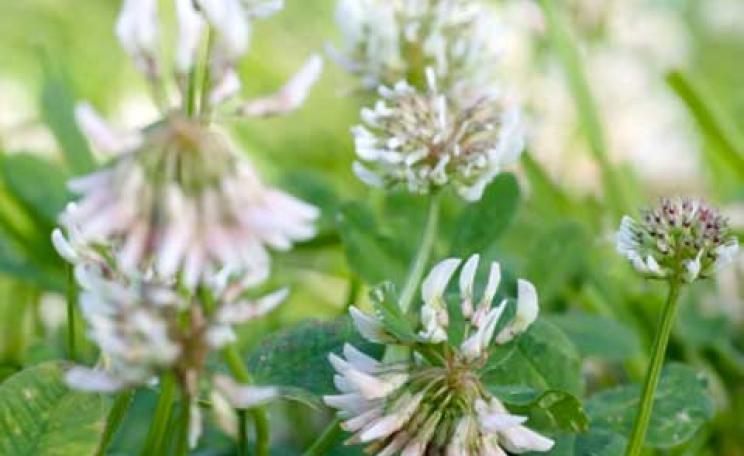The recession and the resulting squeeze on living standards have little to recommend them except in one respect. Thanks to a combination of rising food prices and greater environmental awareness, the last few years have seen interest in DIY food production skyrocket. According to the Department of the Environment, Food and Rural Affairs [DEFRA], one in three of us now grows fruit and vegetables at home. And why not? Not only can you ensure that what you grow is totally organic, you also avoid the human rights issues surrounding commercial vegetable production and slash food miles to almost zero. In short, DIY vegetables are not only good for you; they're excellent for the planet to boot. What’s more, say DEFRA, DIY veg production is winning new converts every day with many of the new recruits coming from urban - and even inner city - backgrounds.
Sebastian Mayfield, co-founder of London based grower's network, Food Up Front, was forced to think creatively after spending four years on an allotment waiting list and never making it higher than 22nd. ‘I began looking for an alternative closer to home’ he says. ‘And then it dawned on me while lying in the bath one day: why don't we make better use of the space we already have?’ And he’s not alone. People are looking to their balconies, windowsills and lawns as potential places to produce food, which means that even the residents of inner city areas can try their hand at grow your own. Here’s how to get started.
Make the most of your windowsill
According to the National Trust, there are over 600 acres of growing space on windowsills across the UK, which makes them the perfect place to start for the space starved urban dweller. The easiest ’ledge veg’ to grow are spinach, rocket, lettuce and herbs, all of which thrive in small tubs and can be grown from seed. They are also ‘cut and come again’ foods which will keep thriving when picked and are low maintenance. All you really need to keep them happy is regular watering and nice sunny spot.
 Try a grow bag
Try a grow bag
Container gardening is the commonest - and most practical - way to grow food in the city. Pots can be placed almost anywhere, are easily moved, simple to reach when you want to start picking and excellent value for money - you can get even the pots for free by recycling catering tubs. When choosing your vegetables, go for varieties that have limited growth so they won’t outgrow their container (the back of a seed packet will usually tell you this). Start the seeds off indoors in early spring and transfer to outdoor pots as summer arrives. Grow bags are another useful option but many people are put off by the fact they’re made from non-degradable plastic. Thank heaven for jute bags then (www.sew-green.co.uk). Made entirely from plant fibres and totally biodegradable, they will last a good few seasons and can be added to your compost heap when they have done their work. Jute grow bags and containers are ideal for balconies, patios and decking, while in veggie terms, you ought to be successful with carrots, onions, potatoes, tomatoes, beetroot, cabbage, leeks and lettuce. The only downside to container growing is that you have to water your plants frequently as they can easily dry out.
Use your walls
Finding extra space for veg means looking at wall space as well as what you can squeeze onto your balcony. There are plenty of varieties that are happy to twine around a trellis and still produce an abundant crop. Lattices compliment container gardening and can easily be fixed to sheds, back walls or wooden balconies to provide support for shoots, stems and vines. Trellises provide a stable climbing frame for green beans and tomatoes, and can also be made into a decorative feature by mixing a few sweet pea seeds in with your beans. Both can easily be bought from garden centres or you can weave your own from hazel or willow twigs. Bug control is easier too; partly because they’re more visible and also because they’re easier to reach. Vegetables that do well this way are green beans, peas cucumbers, gourds, squash, pumpkin, grapes and strawberries.
Grow your own fruit
Approximately 60 per of orchards have been lost since the 1950s, according to the Orchard Network, with supermarkets favouring high-yield commercial varieties over native British species. Add to this the increasing price of fruit and an apple tree or blackberry bush looks like a wise investment. All you need is an underused corner of the garden and you could be producing apples, pears, plums, quinces, cherries, apricots or peaches within a year. Fruit trees are best bought young (between one and three years old) as they establish themselves more quickly. If lack of space is a problem, try a dwarf variety – most of which do very well in a container and can be moved inside to protect them from birds, winds and frost. Berry bushes are also suitable for containers while hanging baskets provide the perfect spot for growing strawberries.
 Invest in raised beds
Invest in raised beds
Swap your clematis for carrots by converting your garden borders into vegetable plots. They offer the ideal space for root vegetables such as beetroot, onions, potatoes, carrots and parsnips as well as surface growers such as lettuce, cauliflower and courgettes. Alternatively, you can utilise a neglected patch of lawn or backyard by adding a raised bed. They are easy to assemble and are available as flat packs from most garden centres. You can also make your own from recycled timber (make sure the wood hasn’t been treated with any harsh chemicals that could kill off your plants). Make them about a metre wide and leave plenty of room for you to kneel in the paths in between. Other benefits include easy access to weeds, better moisture retention and protection for your precious seedlings by way of a fleece or mesh covering.
Adopt a chicken
If you’re blessed with a reasonable sized garden, adopting a couple of hens not only means a daily supply of fresh eggs but also free help with your garden. A basic coop is not too costly or difficult to assemble and the general rule is one square meter per chicken. It’s a good idea to provide a bit of amusement such as dirt baths or pecking toys as a bored chicken can become an aggressive chicken. You can get hens from the Battery Hen Welfare Trust, which has nursed thousands of chickens back to health after being rescued from a life of misery on battery farms. While chickens will happily scratch around and dig up your weeds for you, it’s best to restrict them to clearing duties as they’ll quite happily gobble up your seedlings too if you let them.
 Put hives on your roof
Put hives on your roof
Britain’s bees are in decline and experts are still unable to determine the cause. Some believe it’s due to mobile phone masts interfering with their navigation systems while others cite disease or pesticide poisoning. Whatever the reason, by setting up a city hive, you are providing a secure and well maintained home for them while ensuring the local flora and fauna (and fellow urban growers’ vegetables) are getting pollinated. And you don’t need a huge garden either - a yard or rooftop would do, as French beauty brand Melvita have shown with the hives that decorate the roof of their Covent Garden store. Although relatively simple, there are many intricacies to keeping bees so get some advice from the British Beekeepers Association before getting started. Oh, and you get delicious honey too.
Get a greenhouse
Traditionally associated with old men and tomatoes, the greenhouse has sadly gone out of fashion – even more depressing when you consider how useful they are. Not only do they keep urban pests and predators at bay, they provide the heat and humidity that many plants need to thrive. You can also regulate the amount of water your plants receive, so drought and flood are rarely issues. In short, you have complete control over your plants' growing environment. Perhaps the biggest plus for the city gardener is that you can grow food for longer periods so you’ll always have a ready supply of food. Vegetables that thrive in a greenhouse include tender crops such as aubergines, cucumbers, chillies, tomatoes or more exotic plants like melons and sweet potatoes.
Convert urban wasteland
While inner city land is scarce and at a premium, you might be lucky enough to come across a pocket of derelict land that can be converted into an organic paradise. Along with the fun to be had during an hour or two of seed bombing, community gardening provides security against volatile food prices and gives you truly local produce. The Cuban ‘Organoponico’ model has inspired many organisations across the UK to acquire wasteland in order to feed local communities, provide jobs and beautify urban areas.  Julie Brown of London-based community gardening organisation, Growing Communities, successfully converted of a patch of wasteland formerly frequented by urinating dogs and drug addicts into a vegetable haven and now has a market garden that helps feed the local community. But be patient: finding your own urban paradise may involve a fair bit of digging around along with lots of phone calls to the council or land registry to see who owns what.
Julie Brown of London-based community gardening organisation, Growing Communities, successfully converted of a patch of wasteland formerly frequented by urinating dogs and drug addicts into a vegetable haven and now has a market garden that helps feed the local community. But be patient: finding your own urban paradise may involve a fair bit of digging around along with lots of phone calls to the council or land registry to see who owns what.
Get on the waiting list for an allotment
Thanks to increased interest in home vegetable production, allotments have become like gold dust. The average waiting list is three years (or 40 for an unlucky few in central London). However, if you’re lucky enough to get your green fingers on one, they can supply an almost year round supply of pesticide-free fruit, vegetables and berries amongst a community of fellow planters who have priceless knowledge about the best ways to plant. Allotments are not for romantics though as there is a tremendous amount of work involved. Contact your local council without delay to get on the list and in the meantime, try your hand at some ‘ledge veg’ or container gardening.
| READ MORE... | |
 |
GREEN LIVING The beginner’s guide to making your own compost Contrary to popular belief, composting is simple. What’s more, it’s also eco-friendly, cheap and utterly addictive. Hannah Corr shows you how to get started |
 |
GREEN LIVING The A to Z of beekeeping From zoning to killer bees and lovely honey: Gervase Poulden explains the essentials of beekeeping |
 |
GREEN LIVING How to…make your garden grow in winter The harvest might be in full swing but, say Ruth Styles and Robert Phillips, if you want the bounty to continue into December, now is the time to start planning your winter vegetable garden |
 |
GREEN LIVING What is a seedbomb? In an exclusive extract from her new book, Seedbombs: Going Wild with Flowers, author and gardener, Josie Jeffery, explains the seedbomb phenomenon |
 |
GREEN LIVING The A-Z of chicken keeping Can’t tell your Marans from your Malays? Jeff Holman presents the A to Z guide to chicken keeping |








